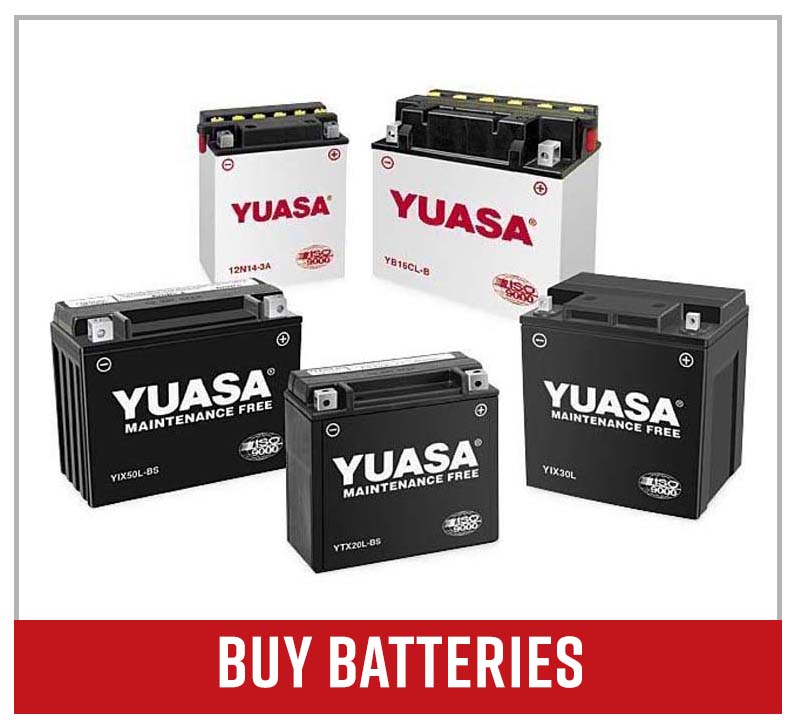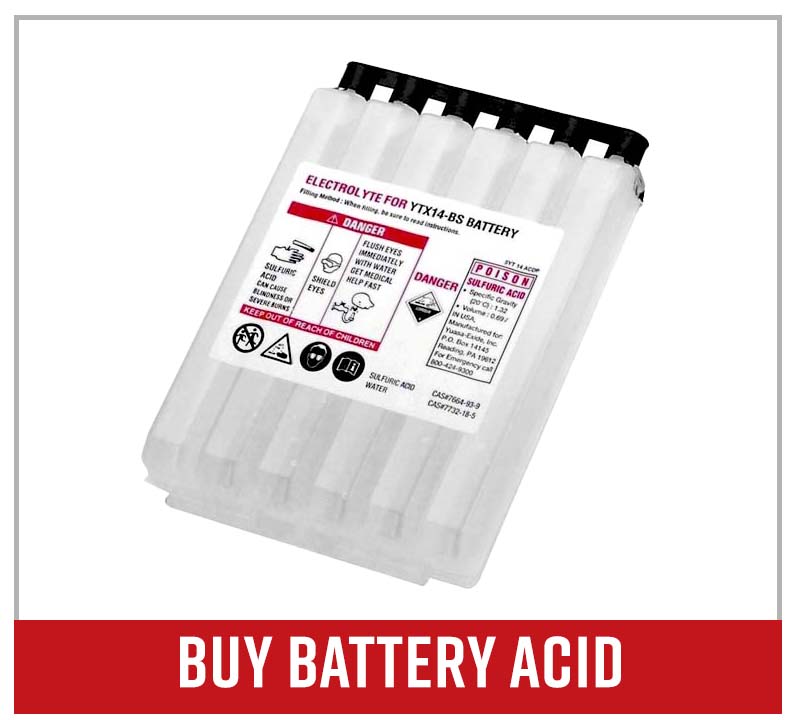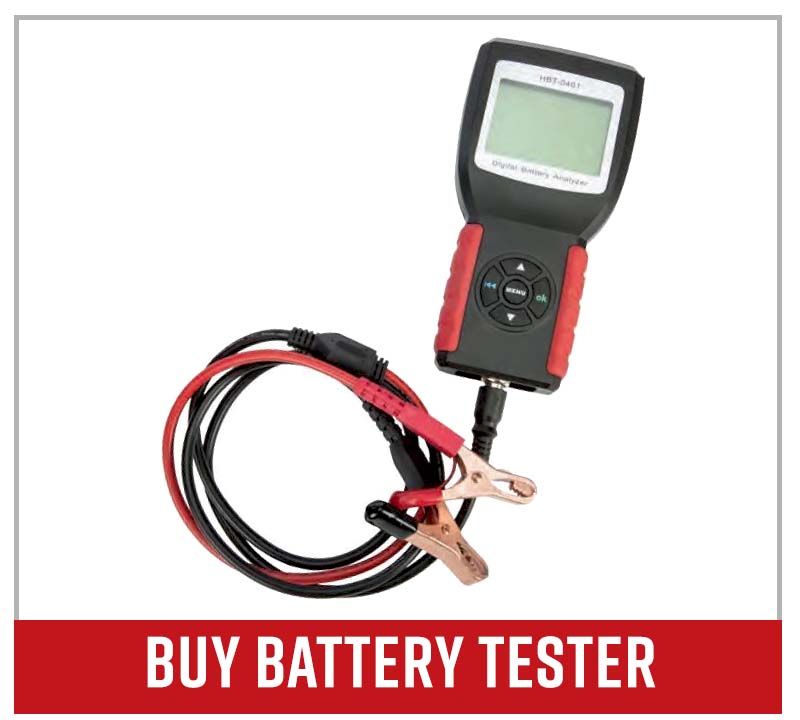Motorcycle Battery Types and How to Charge Them
Motorcycle batteries come in various types, and they're not all created equal when it comes to charging them.
The most commonly used motorcycle battery type is the lead-acid battery. Invented in 1859, the lead-acid battery got its name because it uses lead and sulfuric acid to generate an electromechanical reaction, which converts chemical energy into electrical power.

Wet Cell Lead-Acid Batteries
The most basic type of battery is the wet cell lead-acid battery. Wet cell batteries contain cells that are filled with a liquid electrolyte (sulfuric acid) and then charged.
Wet Cell Battery Pros
- Simple to maintain and top off with electrolyte
- Easy to charge and doesn't require a smart charger
- Withstands higher voltage charge than AGM batteries
- Robust and not affected by the charge put into it
Wet Cell Battery Cons
- Larger and heavier than AGM batteries
- Relatively low performance
- Doesn't hold charge as well as AGM batteries, particularly when not in regular use
- Liquid electrolyte doesn't respond well to vibration or being tilted away from the vertical
- Poses risks of corrosion from sulfuric acid and explosions from hydrogen gas
Wet cell lead-acid batteries are best suited to stable platforms, and require more space to house them. They're more commonly found in automobiles, and are used less and less in motorcycles these days. Wet cell batteries aren't suitable for sport bikes or dirt bikes.
AGM Batteries
The absorbent glass mat (AGM) battery is a type of lead-acid battery that uses fiberglass matting to absorb and store the sulfuric acid electrolyte. This makes the battery more efficient and spill-proof.

AGM batteries are available in two formats:
- Battery and electrolyte are not yet combined; the electrolyte must be added to the battery cells
- Battery that comes completely sealed from the factory and is maintenance-free
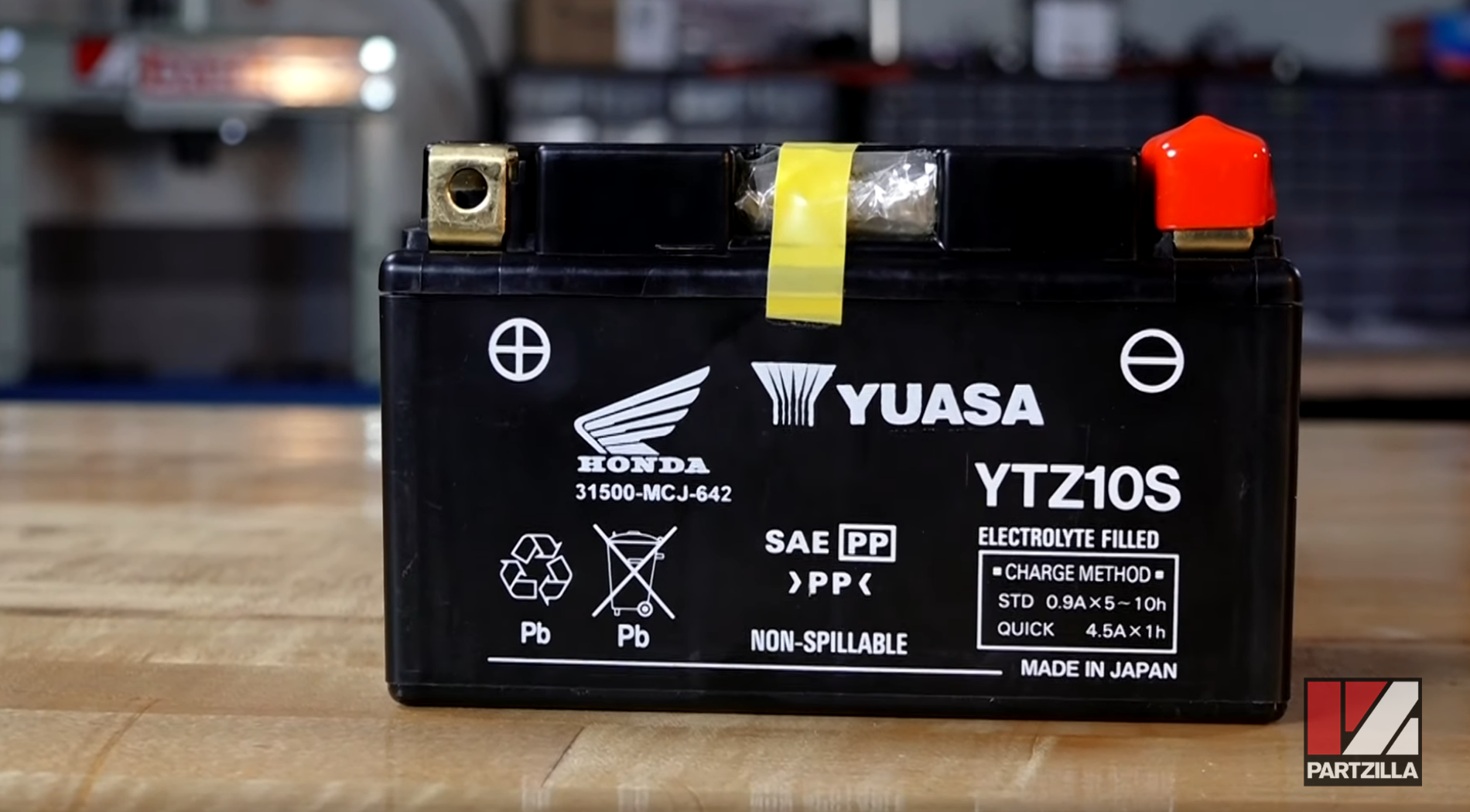
AGM Battery Pros
- High performance
- Holds charge well and is less prone to self-discharge
- Withstands low temperatures better than wet-cell batteries
- Smaller and lighter than wet-cell batteries
- Sealed batteries can be installed at varying angles and pose no risk of corrosion or hydrogen gas
AGM Battery Cons
- More expensive than wet cell batteries
- Require use of a smart charger
Because they’re small, light, and don’t require a stable platform, factory-sealed AGM batteries are ideal for motorcycles, especially sports bikes and dirt bikes, as well as ATVs.
Charging Wet Cell Lead-Acid Batteries
The rule of thumb for wet cell batteries is that the charge amperage should be 10% of the battery’s amp/hour rating. For example, a 14 amp/hour battery should be charged at 1.4 amps.
Wet cell lead-acid batteries don't require smart chargers, and can be charged using old-school chargers such as direct current or constant current chargers. However, direct current/constant current chargers will continue to send a charge to the battery until you disconnect it, so they run the risk of damaging the battery if not properly monitored. If you're still using a direct current/constant current charger, it's probably time you retire it and invest in a modern smart charger.
Charging AGM Batteries
AGM batteries are far more particular about how they're charged. It's important their charge doesn't dip below nor surpass a certain level. Over-charging an AGM battery or allowing it to become discharged will damage the battery and shorten its lifespan. AGM batteries should be charged with a "low and slow" charge current that tapers off as the charge nears completion.
An AGM battery requires a smart charger. However, because AGM batteries only need a low current charge, you don't need to get a smart charger capable of delivering high amperage charges. You can calculate how long a brand-new AGM battery takes to fully charge when you first activate it by dividing its amp/hour rating by the amp charge going into it. For example, a Yuasa YTX14 battery rated at 14 amp/hours being charged with a 1-amp charge will take 14 hours to fully charge. It's possible to speed the charging times of a new AGM battery being activated for the first time by increasing the charge amps. However, because AGM batteries prefer "low and slow" charging, try and use the lowest amp charge whenever possible.
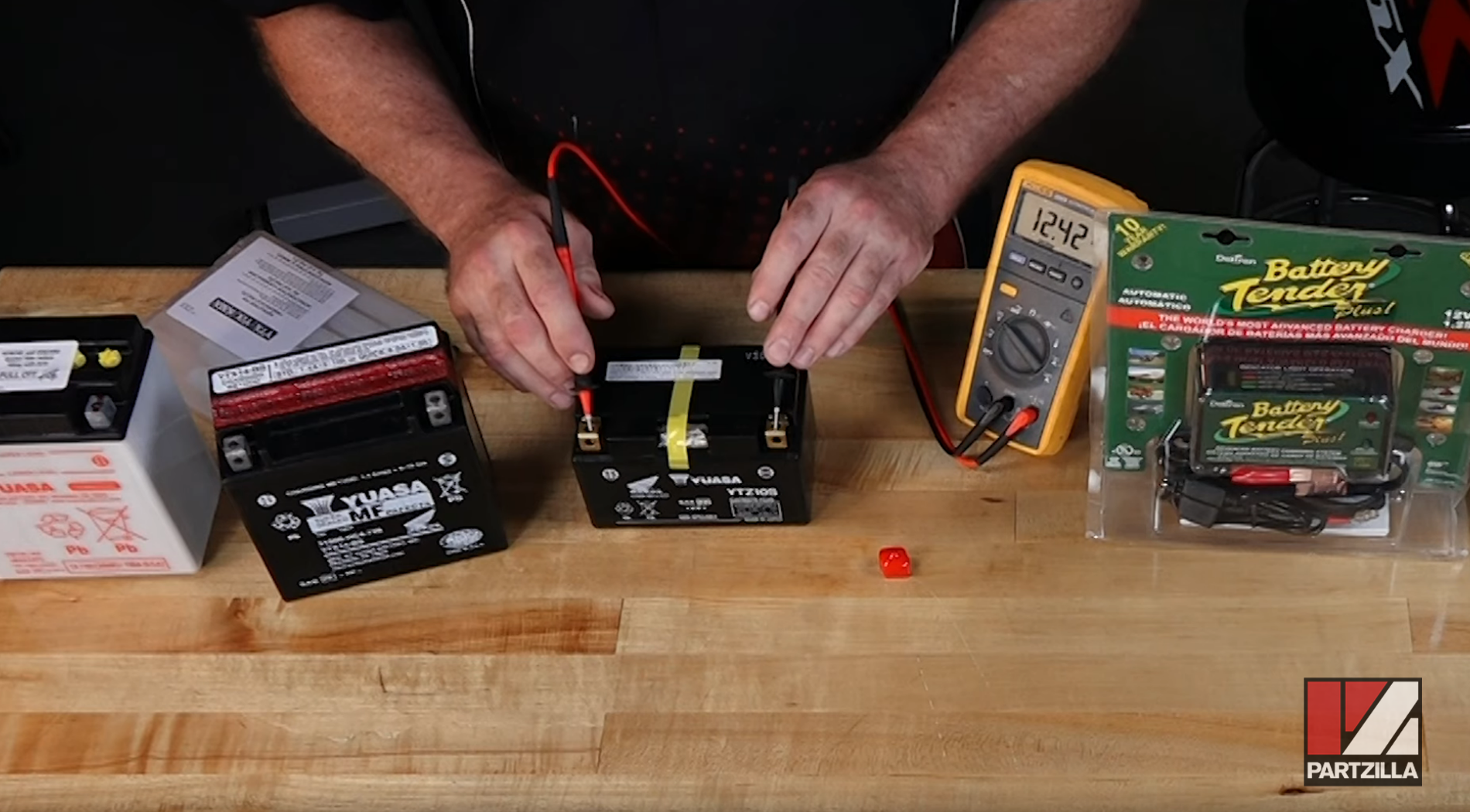
Factory-sealed AGM batteries should come fully charged. You can test a brand-new sealed AGM battery with a battery tester, and the reading should be about 12.4 volts. If the battery is below 12.4 volts, it will need a quick charge to top it off to the correct level. Most AGM batteries have the charging time and amperage they should be charged at printed on them.

Smart Battery Chargers
There are many different types of smart battery chargers available. If you have several different vehicles — some with larger, wet cell lead-acid batteries — you might want to get a smart charger capable of high output/high voltage charging. The drawback with high output/high voltage chargers is that they're more expensive than standard smart chargers.
If you'll only be working with smaller AGM batteries like the ones found in motorcycles and quads, a standard smart charger will be perfect for your requirements. The Deltran Battery Tender Plus provides a steady 1.25-amp charge that's perfectly effective for all AGM batteries.
